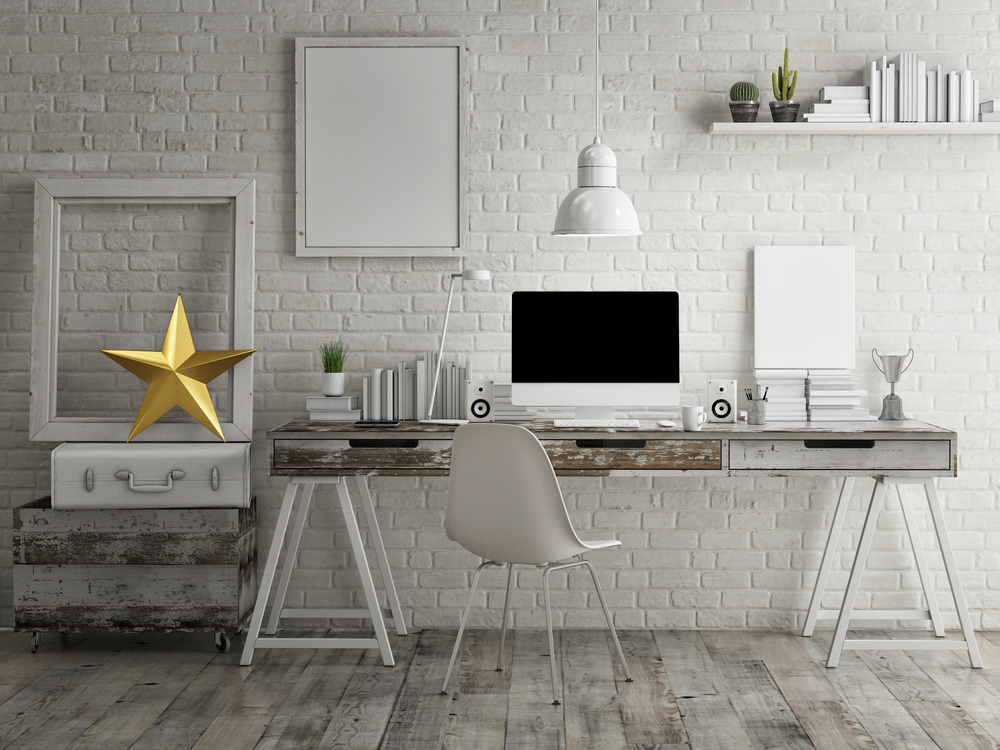Studies have consistently shown that people spend most of their time in just one or two rooms of their house. There’s a lot to be said for taking ownership over your entire home by utilizing and transforming all your space, especially the space you may have been neglecting.
Whether you’re preparing to sell your home on the advice of your real estate agent or you’re just trying to liven up your space, transforming a “dead space” into a useful storage area or cozy writing nook instantly makes your home more desirable, warm, and welcoming.
From that weird triangular space under your stairs to the vertical space you may not even realize you have, here are the best ways to transform your unused home space.
Look up
The area on top of your cupboards can be valuable and useful space that many homeowners simply overlook. Placing baskets or bins up there can double your storage space, and if you’re feeling really ambitious, you could even commission a carpenter to install built-in shelves, bins, or extended cupboards.
This space can also be useful visual real estate. If you already have enough storage, consider placing flowers, glassware, or other decorative items on top of your cupboards. It will warm up the room and can even make the ceilings look higher.
If you have double-height ceilings, you could build a full loft to recapture some of that vertical real estate, though this is more of a suggestion for a buyer versus a renter. The loft could be used as a reading nook, home office, a spare sleeping area, or simply as extra storage. Because storage is one of the first things buyers look for in a home, it’s reasonable to assume that increasing your home’s storage space will also increase its value.
Fill your corners
A single chair or small end table placed in an otherwise empty corner can be surprisingly useful and make a room feel much warmer. This is especially true in rooms such as the bathroom and kitchen, which generally don’t receive as much attention during the design and furnishing process. Books, photos, and other decorative items placed on a chair can lend a room a more personal, lived-in feeling. If you don’t want to furnish your empty corner, consider a potted plant or floor lamp to lend visual warmth to the space.
Repurpose your fireplace
Many older homes have unused fireplaces that are used as storage cubbies or simply left empty. If you have an old fireplace, consider installing a set of custom-built shelves in the space to make it more efficient and more visually pleasing. It’s a manageable home improvement project that will take only a day or two and won’t require you to take out a construction loan.
If you don’t need the extra storage space, consider painting the inside of the fireplace a bright, eye-catching color or painting a small mural in there to make it a focal point of the room.
Add green to the space
A plant or two is a great way to activate an unused space. Studies have shown that plants are proven mood boosters and stress relievers, and they also improve indoor air quality. There’s a reason adding plants to a home is one of the first things real estate agents suggest to eager home sellers.
Snake plants and cacti are low-maintenance plants that thrive in low-light conditions, so they’re perfect for your dim corners and alcoves. Once again, don’t forget to think vertically. If you don’t have room for a big potted plant on the floor, consider hanging plants from the ceiling.
Think big
Don’t get so fixated on your unused nooks and cubbies that you overlook your unused rooms. Home buyers tend to buy as much house as they can afford, so it’s not uncommon for homeowners to have a few rooms, such as a den or guest bedroom, that they’re not really using on a daily basis.
Design experts suggest making those rooms into multifunctional spaces. For example, installing a fold-down desk in a guest bedroom allows you to use it as a home office during the 51 weeks of the year you don’t have a guest staying. Other options include a home gym, yoga studio, or home library. Although some of these projects can be pricey, there are a lot of home improvement loans available, even to homeowners with bad credit.
Hang mirrors
Mirrors improve a space in multiple ways, from reflecting and increasing natural light, to creating the illusion of a larger space. Experts suggest hanging them across from windows to maximize your light. If this isn’t possible, you can also create a “window effect” by placing a floor or table lamp near a wall mirror. Mirrors should be hung near eye level, although oversized mirrors can lean against a wall for an interesting visual effect.
Use color
Activating your unused space can mean giving it a function, such as an office or reading nook, but it can also mean giving it a visual purpose. Painting a vivid accent wall in a neglected section of the room can bring it to life. So can wall hangings, such as artwork, mirrors, floating bookshelves, or a bold-print wallpaper.
Storage is a great last resort
If you can’t come up with a function for a space or a way to make it visually interesting, you can always make it into storage space. You can never have too much space to put extra clothes, bedding, or books. If you’re willing to build or commission custom-made shelves for your unused alcoves and bins, you can make full use of the space while keeping it looking clean and professional.


